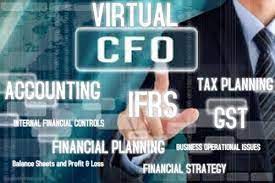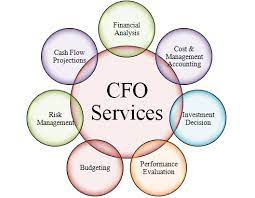Protect your business from fraudulent users & payments with fraud detection & prevention tools that easily integrate within minutes. Use real-time scoring, proxy & VPN detection, device fingerprinting, and more to prevent click fraud, spam, scraping, fake accounts & more.
Use our API, including IPQS fraud detection, to quickly score email addresses, URLs, or domains with risk analysis data. This is ideal for affiliate agencies & advertisers, merchants, forums, and lead generation services.

Real-time scoring
Detect suspicious users & payments with real time fraud scoring that analyzes how likely a user or visitor is to engage in fraudulent behavior. Our fraud prevention tools validate a user’s data and identify the likelihood of them committing credit card fraud, click fraud, IP address fraud, and other types of online abuse with more accuracy than other providers. This information is then used to automatically flag, reject, or block users with the highest risk levels without interrupting trusted & legitimate customers.
Reduce chargebacks & lost revenue with accurate user scoring for ecommerce & retail, lead generation & iGaming, and other industries. IPQS provides a robust set of user and transaction scoring rules including proxy & VPN detection, device fingerprinting, email validation, phone verification, and more. Our system also performs advanced reputation scoring and validation with hundreds of syntax & DNS checks.
SEON also enables you to adjust all of the fraud score settings and thresholds yourself to match your business’ specific risk appetite. This allows you to avoid the one size fits all approach of other anti-fraud solutions. SEON’s machine learning rule suggestions are fully transparent and human-readable, so you always know exactly what impact a rule would have on your overall risk scores. For example, you could make a rule that adds +10 points to anyone using a proxy or VPN connection while simultaneously lowering the thresholds for data centers and telecommunication providers.
Proxy Detection
Detect Proxies, Tor nodes, VPN connections & other shared connection types preferred by fraudsters & cybercriminals online. Prevent fraudulent registrations, orders & logins with the industry’s most advanced proxy detection based on honeypots & traps, blacklists, forensic data and client feedback.
The IPQS risk API instantly scores any click, payment or user based on the following key variables:
Overall fraud score indicating the likelihood of bad behavior. Higher scores indicate a greater chance of fraudulent activity.
Fraud risk level based on reputation scoring across the entire threat network that spans every continent. Higher scores indicate a greater chance of abusive behavior like credit card fraud, spamming, bots & other automated fraudulent activities.
Is this an open proxy, SOCKS server, TOR node or other compromised network?
The IPQS reputation API provides real-time lookups for over 30 key data points about the device, user, and their location. This information includes geo location data, ISP, Connection type, Device details, Recent reputation history, and much more. With this information, IPQS can accurately determine if the user is connecting via a proxy or VPN in real-time. This helps prevent fraudsters from creating duplicate accounts, posting spammy comments & messages, scraping sensitive content, evading country specific filters or other high risk behavior on your site. The results are instantly displayed as a simple risk score so users with a high risk can be blocked, flagged for review, or redirected away from critical parts of your site.
Email Address Verification
Get an accurate reputation score and real-time validation for email addresses with the IPQS fraud detection API. This service is ideal for affiliate agencies & advertisers that want to avoid fake & duplicate accounts, merchants that want to reduce chargebacks, and forums that want to protect their user base from spammers.
Our email validation API performs extensive syntax & DNS checks to verify an email address is valid. This is crucial for any website, software, or application that needs to communicate with an email system. It also detects high risk users such as disposable email services, SMTP blacklists, and frequent complainers that will negatively affect your sender score.
Our IPQS proxy detection API can identify low quality IP connections that indicate fraudulent activity. This includes proxies, Tor nodes, VPNs, residential proxies, botnets, malware & spyware, and other bad shared connections. This is essential to prevent fraud from abusive users or fraudulent transactions. Additionally, the API can also lookup the estimated date an email was first used to detect stale spoofed emails and disposable accounts.
Bot Protection
Block bots in real time with industry leading fraud scoring that detects non-human behavior including the newest techniques like residential proxies, fake VPNs & location spoofing. Reduce fraud & abuse, such as fraudulent transactions & chargebacks by stopping high risk users & traffic. Deploy fraud prevention tools that adapt to your audience & region with custom rules, behavior settings & scoring options.
Protect your platform against fraudsters by screening payments in real-time and preventing credit card fraud, click fraud, account takeover, and more. Prevent false user registrations by scanning for duplicate accounts, abusive users & high risk data. Protect against spammers by scanning for invalid & disposable email addresses, disconnected or temporary phone numbers.
Improve your users’ experience by automatically validating new data points such as phone numbers, email addresses, URLs or domains. IPQS is a powerful tool for affiliate agencies & advertisers, ecommerce & sales, software developers, lead generation & other services that benefit from reduced fraud and abuse. The premium version of the service includes more advanced data points, real-time scores & detailed reporting stats for better quality control. Detect low quality connections that indicate fraudulent activity such as proxies, TOR & VPNs and use device fingerprinting techniques to detect hijacked & fake virtual devices (emulators) to identify suspicious users. This enables higher confidence in fraud scoring.


















